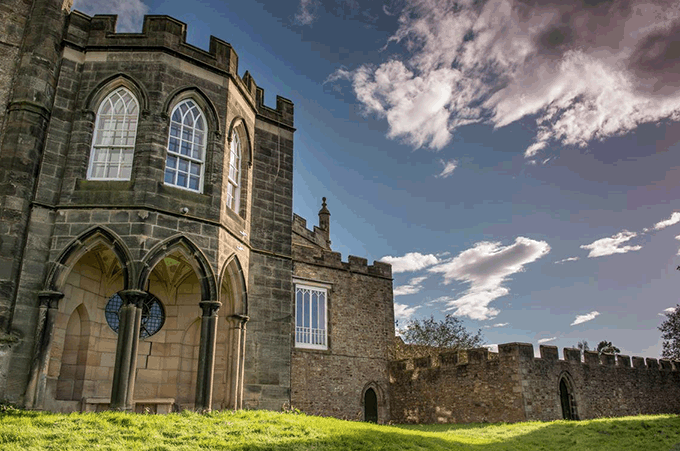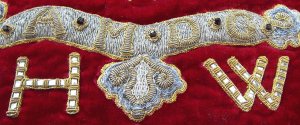A new exhibition, opening at County Durham’s Auckland Castle on October 16, reunites embroidered vestments for the first time in over 340 years and offers fresh insight into the era of the Gunpowder Plot.

Close to the heart of the Gunpowder Plot of 1605 – the failed conspiracy to assassinate King James I that made Guy Fawkes famous – Helena Wintour was a talented embroiderer and devout Catholic whose father and uncles were executed in 1606.
The Wintours belonged to a group of disaffected Catholics who were planning to kill James I by blowing up the House of Lords and to restore Protestant England to Catholicism. However, the Gunpowder Plot was foiled at the last minute, as we remember every year on 5 November, Guy Fawkes Night.
Plots & Spangles, which opens at County Durham’s Auckland Castle on October 16 and runs until April 11 2016, reunites the historic embroidered vestments created by Helena Wintour in the 17th century for the first time in over 340 years.

After the death of her father, Robert Wintour, and two of his brothers when she was just six years old, Helena remained deeply committed to her Catholic faith. The creation of her intricate embroidered work – full of Catholic iconography – was a daily act of devotion.
Despite her family name being so strongly associated with the Gunpowder Plot, Helena worked closely with the missionaries of the Jesuit order throughout her lifetime and was known to have harboured priests on the family’s estate in Worcestershire at considerable risk to her own life. In death Helena bequeathed her collection of vestments to the Jesuit order: a final testament to her Catholic faith.
Plots & Spangles offers an insight into Helena’s life and her devotion and close association with the Jesuits. Remarkably, each piece is inscribed with Helena’s signature and family crest – a statement of authorship from a female artist of the time.

The exhibition will include a number of historically significant objects that are very revealing of the time, such as the lantern carried by Guy Fawkes when he was arrested in the cellars of the Houses of Parliament in 1605 and William Shakespeare’s First Folio, containing plays which influenced and inspired Helena’s works
Helena’s collection of vestments were dispersed after her death, following a family dispute, and finally came to reside respectively at Douai Abbey in Berkshire and Stonyhurst College. The collection has been reunited for the exhibition at Auckland Castle, the former palace of the Prince Bishops of Durham, through a partnership between Auckland Castle Trust with Stonyhurst College, the British Province of the Society of Jesus and Douai Abbey.
Related articlesThe Art of Tudor and Stuart Fashion |
Click here to subscribe! |
Download BRITAIN Magazine to your mobile today

 No mobile device? Purchase directly on Zinio for your desktop!
No mobile device? Purchase directly on Zinio for your desktop!





 © 2024
© 2024